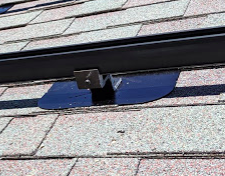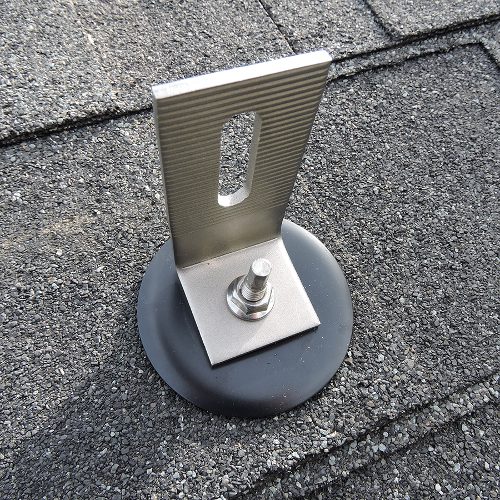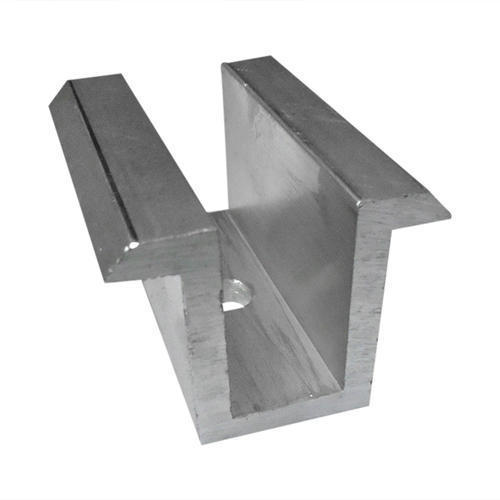Once a solar panel system is installed, you’ll generally only see the shiny new panels on your property. However, the solar racking beneath them is an integral part of any solar installation.
What is solar racking?
In order to safely fix solar panels to buildings or the ground, solar installation companies use solar racking products (also known as solar mounting) that hold solar equipment in place in an installation. Solar racking is usually made from aluminum, which works well for rooftop installations due to its combination of strength and low weight, as compared to other metals.
How much does solar racking cost?
Although solar racking is a vital part of any solar installation, the cost of racking represents only a small portion of a total installation. According to the National Renewable Energy Laboratory (NREL), solar racking should cost approximately $0.10 per Watt (W). Given that the average cost of a solar panel installation on EnergySage is $2.98/W, racking should make up roughly 3 percent of the total system cost.
Solar racking components
Not all racking systems are the same. However, there are several components common to most solar racking solutions:
1. Flashings
Installing solar panels on a roof involves drilling holes that are susceptible to leaking if not properly covered. In order to prevent water damage to your property, solar installers use flashing as part of their solar mounting solution. Flashing is material used to stop water from leaking through your roof, usually in the form of an aluminum rectangle. On a traditional asphalt tile roof, flashing is inserted underneath shingles. For roofs made with tile, metal, rubber, or wood, there are specially designed flashings that fit the unique shape of your roofing material.

2. Mounts
Solar panel systems are actually attached to your roof with mounts. Mounts are sometimes referred to as “feet” and are usually attached to your roof with a bolt through the flashing and into a rafter, securing your whole system. There are many varieties of mounts used in different racking systems. Incidentally, this is why solar installers need access to your attic or the underside of your roof during an initial site-visit: to make sure that your rafters are structurally intact and appropriately spaced to accommodate the mounts for your solar panel system.

3. Rails
Mounts hold up rails, which are the component of solar racking that your solar panels sit directly on top of. They are often long aluminum tracks that are installed either vertically or horizontally on your roof plane. There are several types of alternative rail setups to standard rails, such as rail-less or shared-rail. An added benefit of rails is that they provide a clear space to run the wiring of your solar panel system behind the panels themselves, helping to reduce clutter and improve the safety and aesthetics of your installation.

4. Clamps
In order to keep solar panels secured in place on racking, installers use clamps, which link solar modules to the rails below. Installers will often use both mid-clamps and end-clamps on an installation. Mid-clamps sit between solar modules and can hold panels in place on two sides, while end-clamps sit at the ends of solar arrays and are typically larger.

Curious how a full solar panel installation works? Check out our complete overview and time-lapsed video.
Top solar racking brands to know
There are a few major racking brands you should be aware of in the solar industry:
- SnapNrack
- Unirac
- Ironridge
Let’s dive into each of these brands a little deeper to understand what sets them apart from one another:
SnapNrack
SnapNRack is a solar racking company based in California that specializes in making a snap-in racking solution. Their Ultra Rail Roof mounting system uses snap-in brackets for attaching rails, making any installation easy. They also produce ground-mounted racking systems, as well as more traditional penetrating rooftop solutions without snap-in rails.
Unirac
Unirac has several product lines, all catering to different installer preferences for residential and commercial solar panel systems. They have over 5 gigawatts (GW) of installation experience spread out across 750,000 installations and have been active for over 20 years. They are headquartered in New Mexico.
Ironridge
Generally thought of as making some of the physically toughest racking equipment, Ironridge is another popular solar racking manufacturer. They offer pitched roof, flat roof, and ground-mounted racking solutions. Ironridge is based in California, and has been operational since the mid-1990s.
Finding the right racking for your solar panel installation
Whether you already know exactly what racking product you want for your system or you’re still exploring your options, you should review multiple offers from different solar installers before you make your final decision. The easiest way to connect with solar companies that can design systems to your specifications: join the EnergySage Solar Marketplace, where qualified pre-vetted installers are preparing quotes for property owners across the country. You can easily specify the particular equipment you’re seeking during the registration process.






